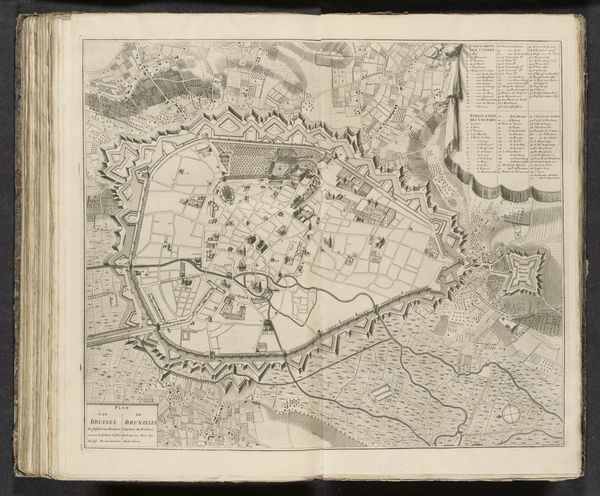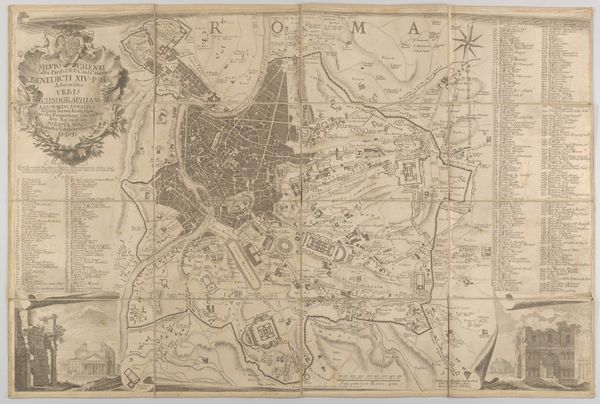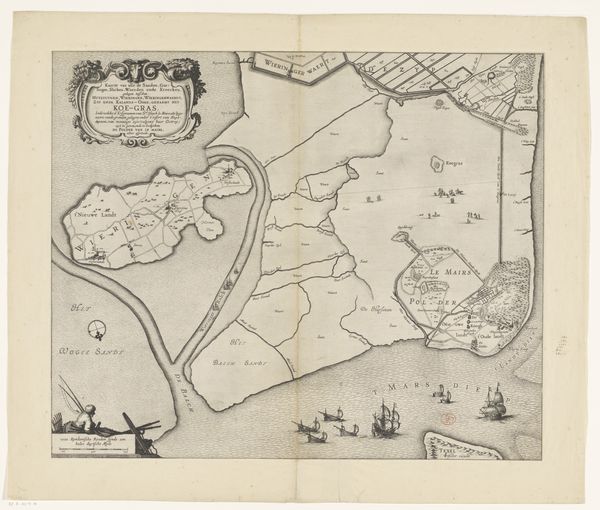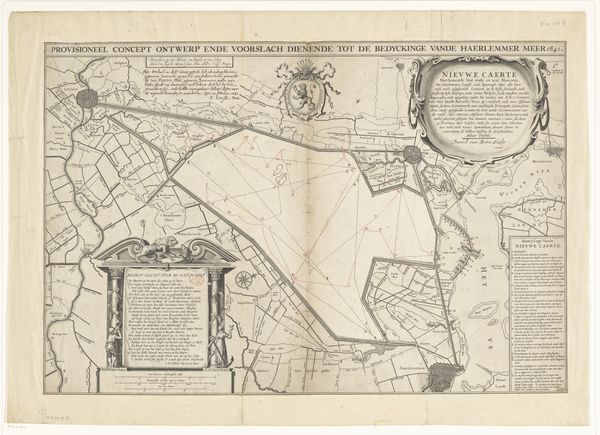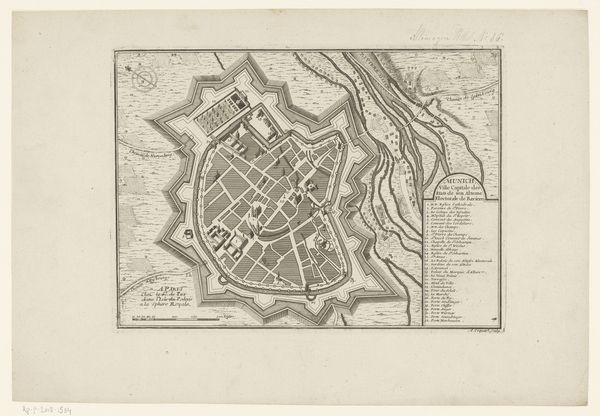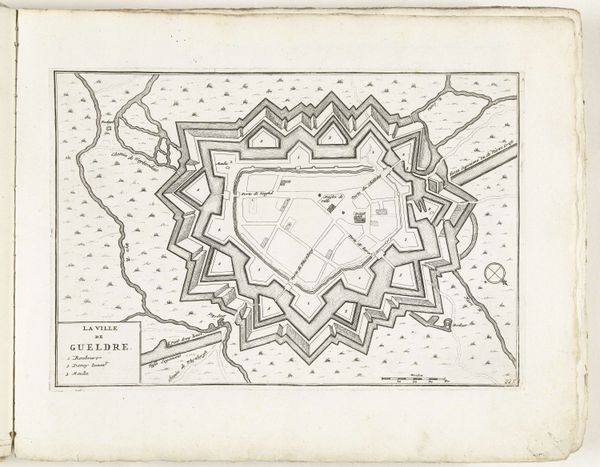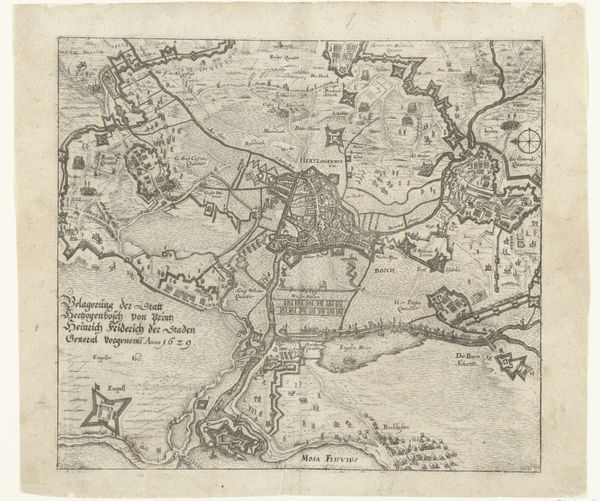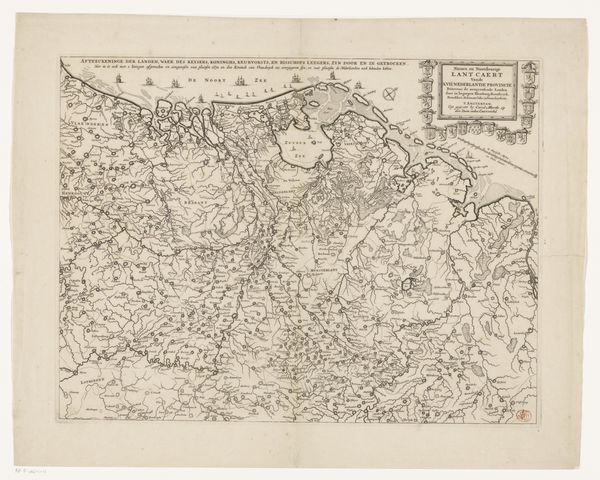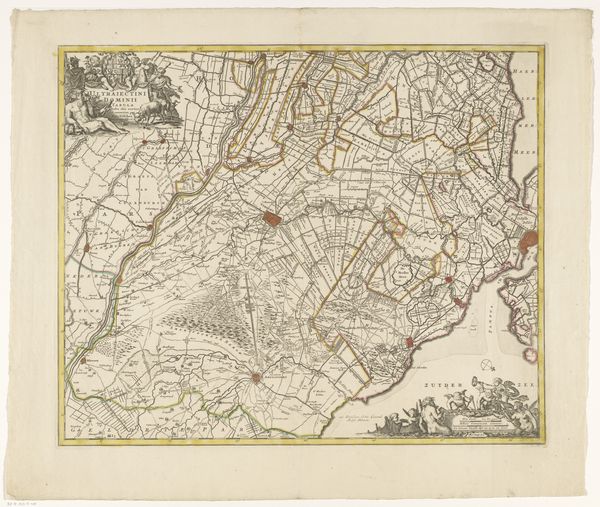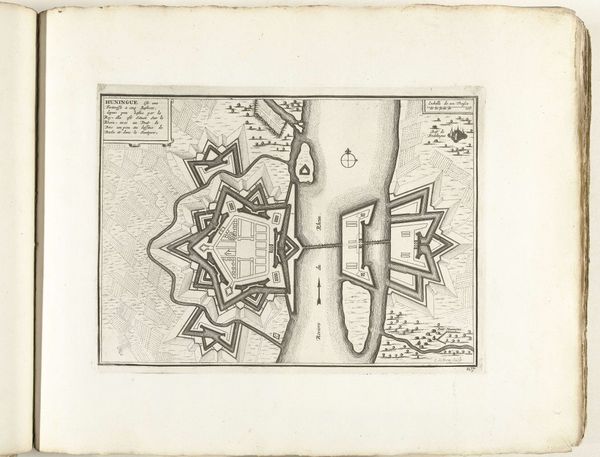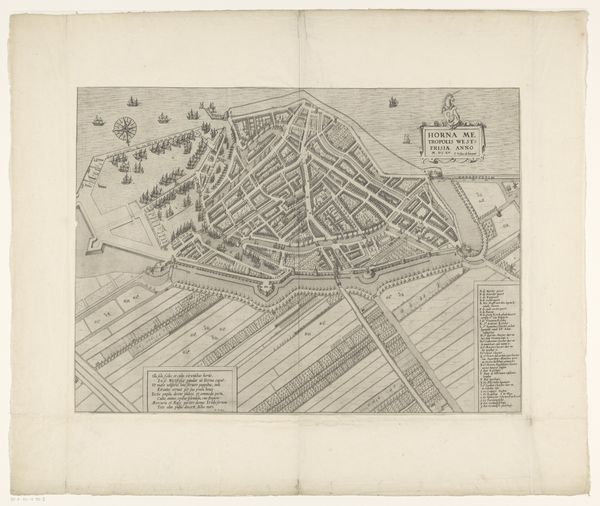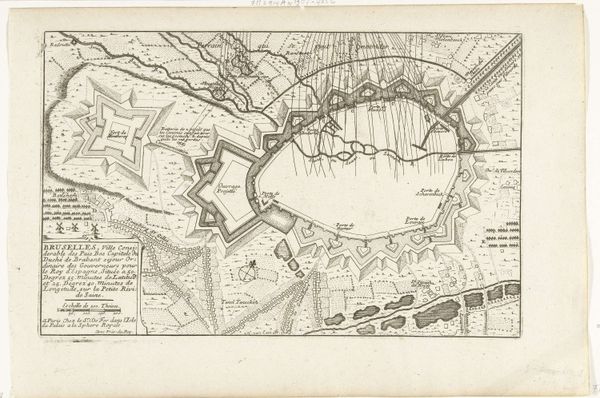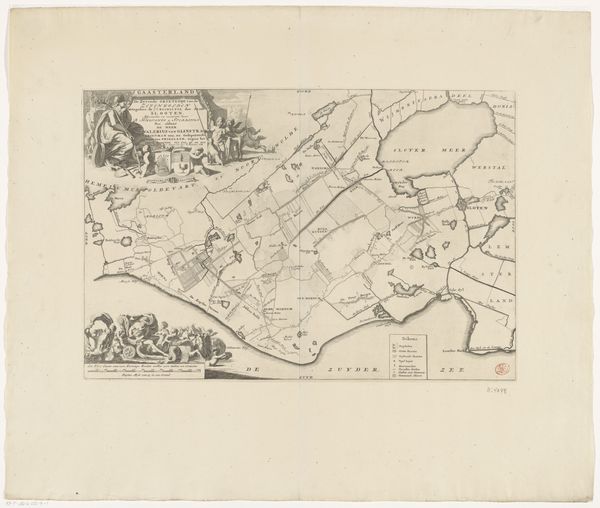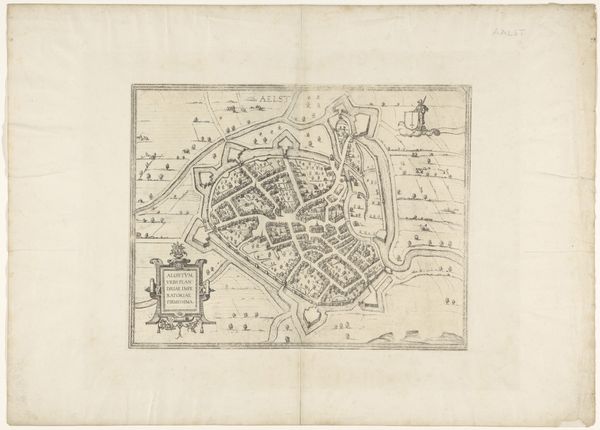
drawing, print, etching, engraving
#
drawing
#
baroque
#
dutch-golden-age
# print
#
etching
#
landscape
#
cityscape
#
engraving
Dimensions: height 441 mm, width 569 mm
Copyright: Rijks Museum: Open Domain
Curator: Looking at "Beleg van Hulst door Frederik Hendrik, 1645," created by Claes Jansz Visscher sometime between 1645 and 1652 and currently residing in the Rijksmuseum, I’m immediately struck by the intricacy of this Dutch Golden Age print. Editor: Indeed, there’s a certain stoic quality to it. All of the lines are so clean and deliberate, especially for depicting such a potentially chaotic subject like a siege. You get a sense of order imposed on conflict. Curator: Precisely! And that's fascinating when you delve into the context. Visscher composed this piece to detail the Siege of Hulst, a significant moment during the Eighty Years' War. You can observe how strategic decisions were visualized. The landscape almost transforms into a military chessboard. Editor: So, what underlying socio-political message was Visscher perhaps trying to send, through this particular depiction of landscape as strategic? This print seems more like an advertisement to gain political support from Hulst than anything else, a strategy commonly seen during this period. Curator: Definitely. The piece acts as propaganda, emphasizing Dutch military prowess while solidifying Frederik Hendrik's image as a powerful leader. Yet, there’s a disturbing level of erasure happening in its imagery. This representation completely leaves out the inhabitants and lived experiences of the place. It’s devoid of true empathy for the besieged city, isn't it? Editor: Right. Hulst becomes merely a stage. And it makes you think about how such images were consumed. Prints like these played a huge role in shaping public opinion and reinforcing ideas about nationhood. Think about it, visual media already wielding immense cultural power way back then. Curator: Absolutely! The details also deserve some analysis. I find it thought-provoking how Visscher balanced accuracy with artistic license. It's not a photograph, but a carefully constructed narrative. Editor: Yes, considering art’s relationship with politics and the institutions propping up societal forces is always productive! This work is more than a representation; it’s a tool that helps cement existing hierarchies and promote Dutch dominance during a fractious era. I love the uncomfortable questions that are posed through something so small. Curator: Me too! Thank you for shedding light on that perspective. It allows one to appreciate the complex layers beneath what seems initially to be simply a straightforward map.
Comments
No comments
Be the first to comment and join the conversation on the ultimate creative platform.
